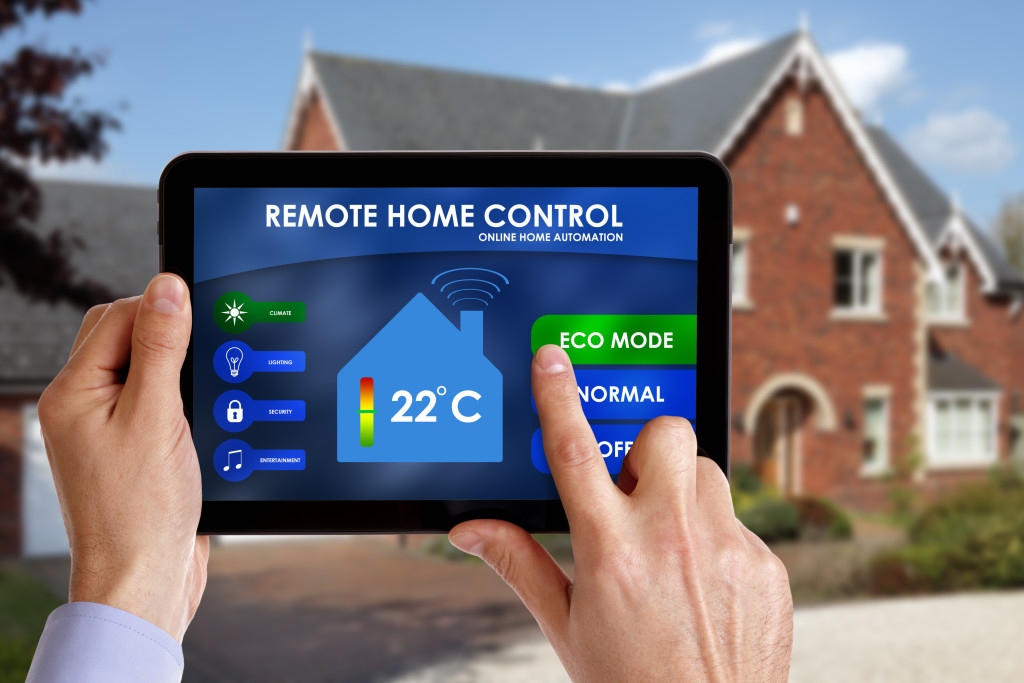- Before implementing smart home automation, ensure you clearly understand the technology options available.
- Defining your goals and selecting suitable devices is essential to automate your home effectively.
- Obtain assistance from an expert to create a plan for automating and installing a system.
- Implement safety and security measures to ensure protection.
- Research and discover more advanced automation features that can simplify your daily tasks.
Smart homes are the future of modern living. You can create a home tailored to your lifestyle and needs with automation systems and smart devices. From energy savings to convenience, embracing the future of smart homes offers limitless possibilities for homeowners everywhere. This guide will provide an overview of what it takes to transform your home into a modern haven. Ready? Dive in!
Understand Your Technology Options
Homeowners must clearly understand their technology options before implementing smart home automation into their living spaces. Many choices are available on the market, ranging in price and function. Investing in a system that does not correspond with your specific needs is a costly mistake that can be avoided.
By taking the time to research and compare different options, one can better understand the capabilities of the technology and choose a system that seamlessly integrates with their daily routines. Understanding technology options will lead to a more efficient, convenient, and satisfying smart home experience.
Identify Your Goals for Automating Your Home
Identifying your goals for automating your home is the first step in developing a smart home. Doing so can help you with the following:
Choose the Right Devices and Integrate Systems
Choosing the proper devices and integrating systems properly is essential to upgrade a home into a smart home with automation options. Choosing suitable devices involves selecting those compatible with one another and the home’s existing systems. Integrating systems refers to connecting all devices and systems to work together seamlessly.
This allows for a more efficient and convenient lifestyle for homeowners. Properly integrating systems and choosing suitable devices is crucial because it ensures that the smart home will work as intended and provide the homeowner with an optimal experience. Failure to select the right devices and properly integrate systems can result in a frustrating and inefficient smart home experience.
Develop an Automation Plan and Installation Process
Developing an automation plan and installation process is crucial when upgrading a home to integrate automation options, as it ensures a seamless transition to a smarter space. Properly planning and executing this process requires expertise and attention to detail, including identifying the different areas and functionalities that can be automated and select the appropriate devices and technologies to integrate.
The well-planned automation process also involves the following:
- Configuring systems to work together.
- Testing their compatibility and functionality during the installation process.
- Ensuring that all devices are connected and working correctly post-installation.
Ensure Security & Safety Measures are in Place

Upgrading a home into a smart one with automation options can be exciting. However, one must consider ensuring proper security and safety measures. Investing in reliable home security systems is a must to protect the home from any potential cyber threats or physical break-ins.
With the advancements in technology and the increasing number of smart home devices available in the market, choosing a compatible security system that can integrate seamlessly with smart devices is essential.
Additionally, it is crucial to establish unique and strong passwords for each device and regularly update the firmware to ensure any vulnerabilities are patched up. Prioritizing security and safety measures not only protects the home but also provides peace of mind to homeowners.
Explore Advanced Automation Features that Make Life Easier
Advanced automation features are the secret sauce that can make upgrading a home into a smart home life-changing. Once set up, these features can save time, money, and energy by automatically performing routine tasks or responding to changing conditions. However, exploring and understanding their capabilities is essential to take advantage of these features truly.
It’s not enough to just turn on a smart device and expect it to work miracles without any effort or understanding on the user’s part. By taking the time to explore advanced automation features properly, homeowners will be able to customize their smart home experience to suit their unique needs and preferences and genuinely make the most of all the time-saving, energy-efficient benefits that smart home technology has to offer.
Leverage Smart Energy Management Strategies for Savings

Properly leveraging smart energy management strategies is essential when upgrading your home into a smart home with automation options. By doing this, homeowners can save money in the long run while reducing their environmental impact. Smart energy management can help minimize energy waste, optimize usage during peak hours, and provide valuable insights into how energy is used within the home.
This is important because energy costs can add up quickly, and being able to control and monitor energy usage can lead to significant savings on monthly bills. By utilizing smart energy management strategies, homeowners can proactively reduce energy costs while ensuring their homes use energy most efficiently.
These are just a few steps in transforming your home into a modern smart home. Creating an automated living space can increase convenience, comfort, and efficiency with the right strategy, understanding of technology options, and dedication to security and safety measures.





